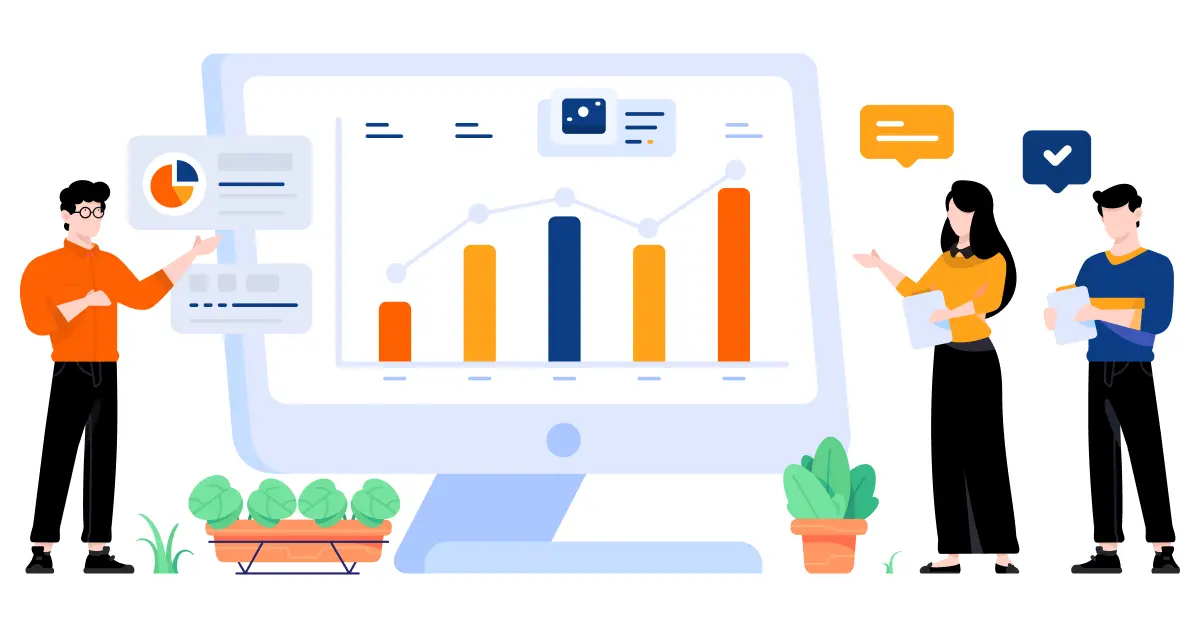Posted on: August 12, 2024
How to Conduct an Employee Performance Review? A Complete Guide
Get started
Employee Performance reviews are essential to ensuring a company is productive and efficient. When you combine employee review software and workforce data, the process can go from being a duty to a strategic tool for employee retention and growth, no matter if you have a standard or mixed workforce.
Furthermore, some reports say that 3 out of 4 Gen Z employees will likely resign if they do not receive regular feedback. This guide will show you how to do a good employee performance review using tools like Leapmax and apply what you learn from tracking employee performance to managing your remote teams.
Table of contents
Step-by-Step Guide to Conduct Employee Performance Review
Here is a step-by-step guide on how to conduct an employee performance review –
Step 1: Set Clear Objectives and Standards
Start by setting quantifiable, explicit goals that align with your business’s strategic objectives. This entails establishing clear standards for employee performance management that all workers in your company can understand. Utilize employee monitoring software to track these metrics effectively, ensuring managers and employees know the expectations.
Step 2: Use the Right Tools
In the digital era, appropriate technology is essential, particularly for businesses overseeing a mixed workforce. Software like Leapmax can streamline the evaluation process, providing robust employee performance tracking and analysis tools. This technology helps gather accurate data on employee productivity, which is vital for a fair review process.
Step 3: Collect Comprehensive Data
Performance data should be collected continuously using time-tracking software and employee productivity tools. This method aids in developing a thorough picture of a worker’s output over time. A few examples of performance measures include deadline adherence, cooperation and remote team collaboration, quality of work, and project completion rates.
Step 4: Prepare for the Review
Before conducting the employee performance review, analyze the data collected. Tools embedded within Leapmax allow for detailed workforce analytics, making it easier to understand patterns and areas of improvement. Obtaining input from colleagues and subordinates is another crucial aspect of preparation that will help you see the employee’s contributions from all angles.
Step 5: Conduct the Review Meeting
Have a private meeting to go over the review’s conclusions. Employees should be able to voice their opinions and have any questions answered during this two-way discussion. The conversation should center on providing constructive criticism, acknowledging successes, and pinpointing areas that still need work.
Step 6: Set Development Goals
Based on the employee performance review, set actionable and realistic employee goals. This might involve employee skills development, new projects, or efficiency improvements. Ensure these goals are tracked and revisited in the following review cycle.
Step 7: Follow-up and Provide Support
Employee performance management is an ongoing process. Provide continuous support to employees through mentoring, training, and resource access. Regular check-ins and updates on progress motivate employees and help them stay aligned with their goals.
Utilizing Technology in Performance Management
Incorporating advanced tools and time-tracking systems is becoming a staple in modern business environments, especially in sectors like BPO management. For instance, employee monitoring tools track time and analyze productivity patterns, providing insights crucial for effective management.
Benefits of a Structured Employee Performance Review Process
1. Enhanced Employee Engagement
Frequent and open performance evaluations contribute to developing a flexible work atmosphere where staff members feel appreciated and understood. Consistent and transparent communication increases the likelihood that staff members will connect with the company’s mission and values. Employees are more devoted to the organization once they see a clear route for advancement and recognition, and turnover rates are lower. Furthermore, job satisfaction and morale may rise when employees know their efforts are valued and observed.
2. Increased Productivity
Structured employee performance reviews allow organizations to identify their employees’ strengths and weaknesses and the specific areas where resources are needed to improve workplace productivity. Tailoring development programs to address these areas can lead to more targeted skill enhancements, optimizing the workforce’s capabilities. For instance, if an employee performance review uncovers a common need for better time management skills across a team, a targeted workshop can be implemented, leading to more efficient project completion and better use of time resources.
3. Data-driven Decisions
Integrating the best-advanced monitoring software, such as Leapmax, into the review process enables managers to make decisions based on comprehensive data. This shift from a subjective to an objective basis for decision-making helps minimize biases and ensures fairness in the treatment of employees. Data-driven insights can highlight possibilities, possible issues, and hidden trends in the workforce that could be noticed in the absence of employee analytics. Analytics may demonstrate that workers perform better when given scheduling flexibility, resulting in more significant adjustments to workforce management tactics.
4. Better Goal Alignment
A structured review process helps align employee goals with the organization’s objectives. During employee performance reviews, managers can clarify how an employee’s achievements contribute to the company’s mission and workflow strategic plans. This alignment enhances employee understanding of their role within the larger context, which can motivate them to achieve their personal and organizational goals.
5. Improved Risk Management
Regular staff actions and outputs are monitored via performance evaluations by employee monitoring, which may aid in the early detection of possible hazards and problems, including declining performance levels or non-compliance with business standards. Early identification reduces risks and stops minor issues from growing into bigger ones, enabling companies to take remedial action sooner.
6. Enhanced Legal Protection
Documenting employee performance and feedback during reviews can also be an essential legal safeguard. These documents can provide necessary evidence should any legal issues arise concerning employment decisions.
They support the organization’s actions as fair and based on documented employee performance rather than on arbitrary or unjustified grounds. Employing statistical data can also illuminate trends and outliers in employee performance reviews.
Conclusion
Effective employee performance reviews are a cornerstone of successful human resource management. Gallup report says that only 2 in 10 employees strongly agree that their performance is managed in a way that motivates them to do outstanding work. By integrating technologies like Leapmax, organizations can achieve more accurate and meaningful workforce assessments.
The procedures described here provide a framework that may be customized to fit the particular requirements of each firm, whether hybrid workforce management or in-office staff. Use these tactics to change how your company handles employee performance management and help create a happier and more productive work environment.







